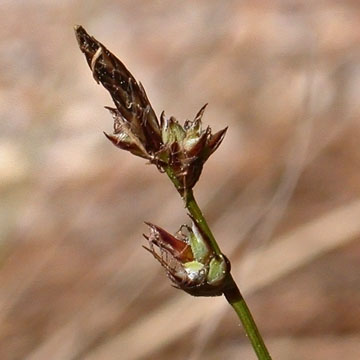

Carex lucorum - (image 1 of 4)
Taxonomy
Family: Cyperaceae
Section Acrocystis
Habitat
Dry, open pine and oak woodlands or clearings, often in sandy soil.
Associates
Distribution
Nova Scotia and New Brunswick to NJ, PA, and southern Ontario, west less commonly to MI, WI, and MN, disjunct in TN. Variety austrolucorum occurs from VA south to GA and in TN.
Morphology
Similar to C. pensylvanica; stem usually strongly scabrous below the inflorescence; sheath of upper cauline leaves usually deeply concave, the cleft extending 1-6 mm below the junction with the blade; perigynia 1.2-1.7 mm wide, abruptly contracted to a prominent beak 0.9-1.6 mm long.
Notes
Fruiting May to early July
Wetland indicator: NA
Carex pensylvanica has shorter perigynium beaks (0.5-0.9 mm) and a smooth or weakly scabrous stem below the inflorescence.
The Appalachian var. austrolucorum has leaves 1-1.3(-1.5) mm wide, while typical C. lucorum has leaves usually more than 1.5 mm wide.
References
Ball, P.W. and A.A. Reznicek. 2002. Carex, In: Flora of North America Editorial Committee, Eds. Flora of North America North of Mexico. Volume 23. Oxford University Press, New York.
Gleason, Henry A. and A. Cronquist. 1991. Manual of Vascular Plants of
Northeastern United States and Adjacent Canada. Second Ed.
The New York Botanical Garden. Bronx, NY
|
© Michael Hough 2018 |